Controlled environment agriculture (CEA), which currently makes up 1 percent of produce sales today, could have a 20 percent market share by the end of the decade, according to a panel of indoor growers at Organic Produce Summit.
Former Whole Foods Chairman Walter Robb, who moderated the educational session that was held in Monterey, CA, believes the category could grow to 10 percent market share within three years. And panelists Paul Mastronardi of Mastronardi Produce, Philip Karp of Shenandoah Growers, and Marc Oshima of AeroFarms predicted up to as much as a 20 percent volume market share for CEA products over the decade.
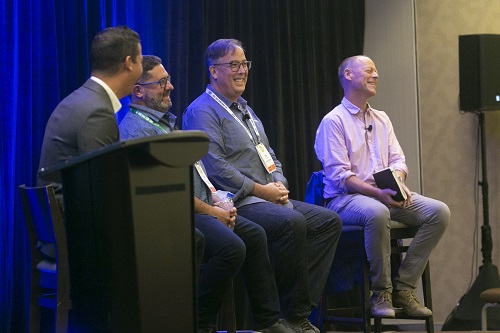
Panelists Paul Mastronardi, Philip Karp, and Marc Oshima with moderator Walter Robb
Robb noted that sales of organic produce took off at the turn of the 21st century as the US Department of Agriculture created the organic seal and began certifying farms. He said that seal unlocked the potential for organic produce and wondered if a similar spike is in the future for CEA.
Each of the panelists declared that CEA is not hype but rather a reality that is delivering today and promises to grow significantly in the coming years as it offers great advantages for producers, consumers, and the environment. The three panelists represent different approaches to CEA, but they all see the same bright future for high-tech farming.
Robb noted that sales of organic produce took off at the turn of the 21st century as the US Department of Agriculture created the organic seal and began certifying farms.
While high-tech farming is what most people think of when they think of CEA, Mastronardi began the discussion noting that his namesake company has been involved in controlled environment farming for almost 80 years. Mastronardi Produce began as an in-the-field grower in the 1920s, adding its first commercial greenhouse in the early 1940s.
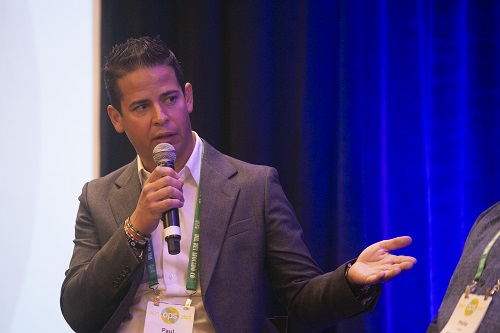
Paul Mastronardi, CEO, Mastronardi Produce
“Everything but traditional open field farming” is controlled environment farming, according to Mastronardi, who is the fourth generation of his family involved in the business. Whether it’s a plastic hoop in the field or indoor factory farming, which he calls growing in a “black box,” it qualifies as CEA to Mastronardi. He broadly describes the concept as simply an effort to control the elements in one way or another.
Currently about 90 percent of Mastronardi’s production comes from what the self-described “future farmer” calls “high-tech glass.” Mastronardi does expect "black box" farming to continue to increase in popularity as there are a lot of investment dollars moving into the farm-tech arena. While leafy greens and herbs seem to dominate that space now, he does expect more and more crops will be grown indoors.
Mastronardi broadly describes CEA as simply an effort to control the elements in one way or another.
At this point, Mastronardi does not believe indoor farming has been able to duplicate what he calls the “magic sparkle” that comes from the sun.
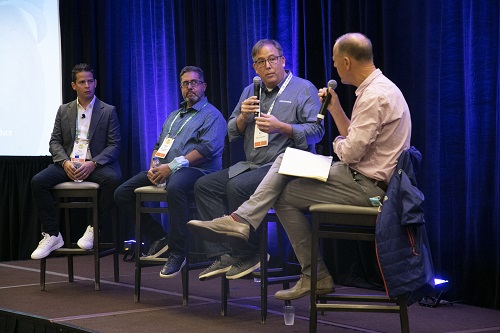
In discussing the advantages of indoor and high-tech greenhouse farming, Mastronardi said reduced water use is the number one advantage, with no use of chemicals another attribute. Mastronardi said successful farming—whether traditional or CEA—largely comes down to the plant variety you start with. “The ultimate potential is in the genetics,” he said, noting his company has a robust varietal development program.
Oshima gave a full-throated endorsement of indoor vertical farming, which defines AeroFarms. The company co-founder and chief marketing officer said AeroFarms is now getting 90 times greater production on its baby leafy greens than traditional field-grown product.
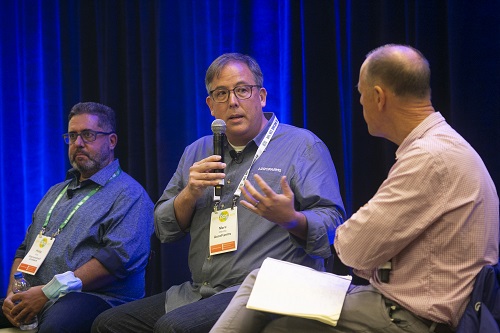
Marc Oshima, Co-Founder and Chief Marketing Officer, AeroFarms
AeroFarms has reduced the growing cycle of baby leaf greens to 14 days, allowing the company to produce 26 crops per year. The growing process involves misting the roots, using only a small fraction of the water needed for a field crop. The process uses no soil and no sunlight, which Oshima calls a “new way of growing” that “embraces and leverages technology.”
At this point, Mastronardi does not believe indoor farming has been able to duplicate what he calls the “magic sparkle” that comes from the sun.
The goal, Mastronardi said, is to create the perfect environment for each plant to deliver optimal freshness and taste while enhancing the nutritional density. CEA will increase overall consumption of fruits and vegetables, Oshima said, by allowing superior flavor to create new eating occasions such as snacking for these herbs and leafy greens.
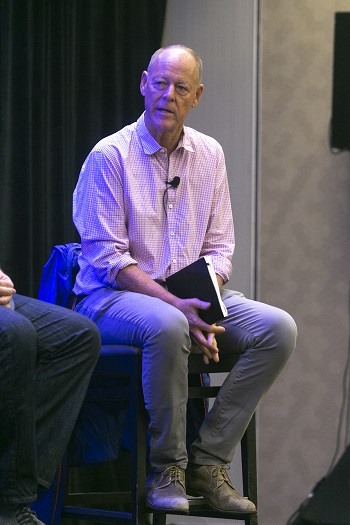
Walter Robb, former Co-CEO, Whole Foods
CEA growing techniques and the ability to produce crops closer to market enhances the efficiency of production, he said, noting that 50 percent of the product in a value-added packaged salad is thrown away. And by being more efficient and closer to market, Oshima said CEA is “democratizing access to good, healthy food.”
The CEA industry, Oshima said, is currently working together to share best practices and minimize some of the issues—including the food safety concerns that are part of growing produce, especially leafy greens..
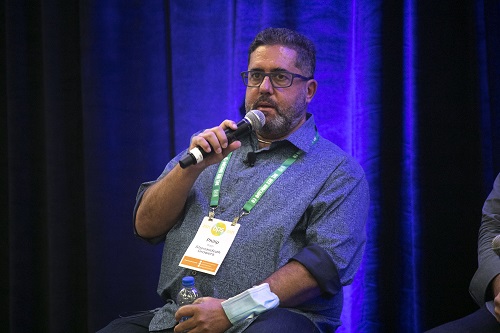
Philip Karp, President and Co-Founder, Shenandoah Growers
Shenandoah Growers has embraced LED-lit indoor growing (with soil as the medium), and Karp predicted that by 2023, 90 percent of the company's production will be CEA based.
CEA will increase overall consumption of fruits and vegetables, Oshima said, by allowing superior flavor to create new eating occasions such as snacking for these herbs and leafy greens.
Shenandoah believes in soil farming and the biology of the plant environment, Karp said, adding that the company has learned how to create its own liquid nitrogen.
Karp said the company’s march to CEA techniques is being driven by its desire “to solve for challenges of freshness and flavor.”

Like the other panelists, Karp stated that the huge reduction in water use is the top initial benefit of CEA—“the low hanging fruit” is how he described it. There are many other advantages to CEA, not the least of which is “shortening the miles to the consumer,” which he believes is good for people and the planet. Karp noted that reducing the length of the supply chain eliminates touch points and potential contamination events.
Karp predicts that by 2023, 90 percent of Shenandoah’s production will be CEA based.
In creating the environment for indoor farming, Karp said the goal is to try to replicate the summer solstice, the longest day of the year, on a continual basis. Ultimately, he envisions converting the energy of the sun to power the LED lighting used for indoor growing.
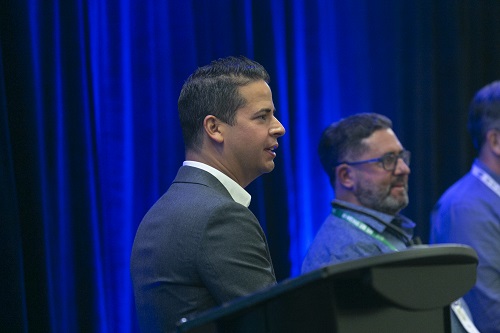
Paul Mastronardi, CEO, Mastronardi Produce
Though the three panelists and moderator spent most of the session discussing CEA from a general vantage point, they did weigh in on the controversy that pits soil-free farming against traditional in-the-dirt organic farmers. Those traditional growers say improving the soil is a central tenet of organic production and if you are growing without soil, it shouldn’t be certified organic under the USDA seal.
So far, the USDA and a court ruling have not agreed with this view. Neither did the panelists.
Karp noted that reducing the length of the supply chain eliminates touch points and potential contamination events.
Mastronardi said for consumers the important attribute of organic is that it is chemical free. He reported that in an extensive survey of consumers about organics, soil was never even mentioned. He does believe that the term “organic” needs updating and predicts the standard will change over the next decade.
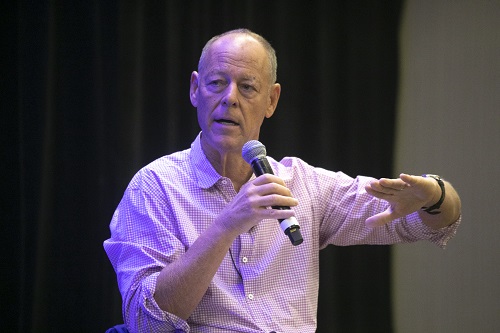
Walter Robb, former Co-CEO, Whole Foods
Oshima agreed. He said what the consumer is looking for in an organic product is an item that contains no pesticides. He noted that the products his company grows indoors contain zero pesticides, including those approved for organic production, and said indoor farmers are good stewards of the environment.
Shenandoah Growers does adhere to the traditional soil use standard for organics. In the future, Karp said he'd like to see a global standard, which he believes will further elevate the category.






